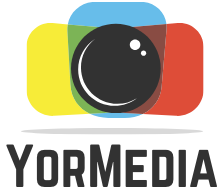Introduction: The Ubiquity of Social Media
Sites like Facebook, Instagram, Twitter, and TikTok have emerged to dominate digital lives, bringing hundreds of billions of users worldwide. While most speak of the boon of social media, what really happens inside that complex net of influence-deserving closer inspection, are the dark or hidden implications for society. End.
Social media feeds on human psychology, capitalizing on the need for validation and social interaction. As people become used to the psychological boost gained from likes and comments, their dependence on these stimuli becomes addictive. As indicated in many studies, excessive use of social media correlates highly with anxiety, depression, and loneliness. The perfect profile seen on social media sites creates unrealistic comparisons, causing problems of body dissatisfaction and lower self-esteem. Such psychological consequences often remain unseen but have deep social impacts.
Social Media and the Slow Bleeding of Privacy
Every click, share, and post forms a sophisticated digital footprint which peels away the veil of privacy. Online social media harvests huge chunks of personal data, which is not always subject to user consent, for the propagation of targeted advertisements and machine learning models. Data breaches and misuse of personal information have become alarmingly common, leaving users vulnerable to identity theft and other cyber threats. This is a hidden social cost — connectivity in turn for privacy.
Algorithms are the unseen designers of social media experiences, deciding what a user is going to see. They are designed primarily to engross users by liking sensationalism, polarizing topics, and taking extreme positions. These echo chambers do tend to mobilize against change, fostering strident inflexibility in artificially created realities, inhibiting critical thinking, and constructive discourse within societies.
Social Media: Catalyst for Polarization
The facility with which users express their thoughts and opinions in the social media realm is double-edged in that it increases discussion but escalates polarization at the same time. Miscommunication, inflammatory words, and lies and misinformation promote an unhealthy cyberspace culture. Political, social, or cultural differences and boundaries are intensified in the cyberspace sphere, spilling into real world disputes. Battles on social media grounds over issues of ideology highlight this unseen sociological impact of the medium.
Positive Effects: A Channel to Connect and Campaign
While it has many negative effects, social media also serves as a force for good. It bridged geographical gaps that were unimaginable before and created new connections that could not be otherwise established. The platforms have now become a campaign tool for advocating issues of social justice, environmental issues, and humanitarian crises. Viral campaigns like #MeToo and #BlackLivesMatter demonstrate the potential for change through this platform.
The Path Forward: Responsible Social Media Usage
Addressing the hidden impacts of social media requires a multi-faceted approach. Users must cultivate digital literacy, learning to navigate platforms critically and responsibly. Social media companies must prioritize ethical practices, balancing profitability with the well-being of their users. Policymakers need to enforce regulations that protect privacy and mitigate harmful content. Ultimately, society must strike a balance between leveraging social media’s benefits and mitigating its risks.
As social media continues to evolve, its influence on society will remain profound. By recognizing and addressing its hidden impacts, we can harness its power to build a more informed, connected, and equitable world.


